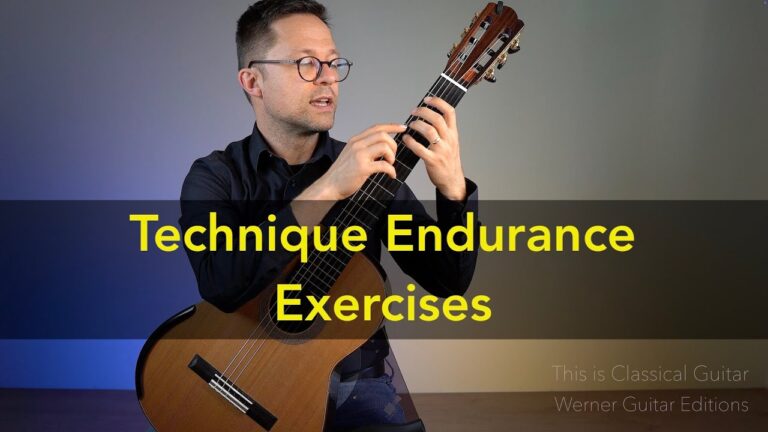A lesson on speed and relaxation on classical guitar and exercises for practicing. These exercises are from my technique book Classical Guitar Technique: Essential Exercises, Scales, and Arpeggios.
How to play faster or increase your tempos is a very common topic for guitarists. However, achieving faster tempos is rarely a matter of just practicing fast, it mainly involves a reworking of your technique in general. I talk about this more in the video but the general formula for achieving faster tempos on your instrument is:
Speed = Economy of Motion + Accuracy + Relaxation
Economy of motion is the act of eliminating unneeded movements. Keeping your fingers close to the strings and preparing your fingers directly over the frets increases efficiency.
Accuracy is self-explanatory but should not be overlooked. Placing your fingers close to the frets allows you to play with less pressure and tension.
Relaxation enables you to access reflexes connected to your body’s natural ergonomic movements. Focus on slow, accurate playing and relaxation. Allow speed to come naturally as a result of good practice.
___
Times and Topics
0:00 – Intro and general tips
0:50 – Left Hand Relaxation and Muting – A common problem for guitarists is when the right hand engages in heavy playing and left hand tension increases by physical association. This exercise aims to disassociate the two hands by allowing the left hand to play lightly while the right hand plays heavily.
3:01 – Staccato Speed Bursts – Getting your finger into the starting position before it has to begin the stroke is key to building speed. Play the eighth notes staccato and the sixteenth notes legato. I recommend you keep track of your metronome speeds and gradually work increase over a series of weeks or months.
5:37 – Quality Control and Destination Points – Aiming for small destination points will secure each note in a scale or passage and give you more confidence and accuracy.
Here’s the YouTube link if you want to watch it there.





Wonderful
Thanks